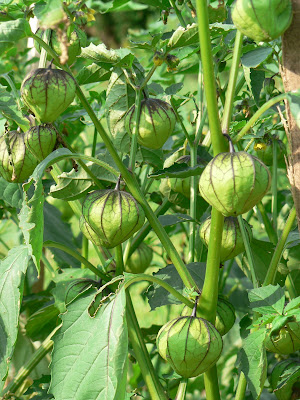




Current agricultural practices reportedly destroy 6 pounds of soil for each pound of food produced.( U.S.D.A statistics) U.S croplands are losing topsoil about 18 times faster than the soil formation rate.
"Population will increase rapidly than in former times, and 'ere long the most valuable of all arts will be the art of deriving a comfortable subsistence from the smallest area of soil." Abraham Lincoln
Last year we had plenty of room to have two large garden plots of companion vegetables, flowers and herbs , a garlic bed surrounded by nasturtiums, a mint bed, a squash bed and two overflowing compost heaps (we prided ourselves on the speed in which they yielded that black gold). When I found out that we would soon be trading in our fields for a 10x10 plot next door to the North Village Student Housing, I went to my favorite worker owned bookstore (Food For Thought Books) in Amherst and bought a book I had been eyeing for a few weeks. John Jeavons " How to Grow More Vegetables * than you ever thought possible on less land than you can imagine" is a classic primer on sustainable farming. Matty has romanticized this vision of an inevitable second Depression. I cannot romanticize the idea but I do know that if I can learn how to grow my own vegetables we will be in good shape, whether the economy fails or not. I have worked on two succesful organinc farms and all I know is that I don't know much. Last year, as my tomato, pepper, tomatillo and herb seeds germinated, sprouted and grew under my watchful eye and the warmth of the lights I rigged up in my kitchen, I was filled with a wonderment that I think is mostly associated with children. I couldn't believe they were really going to grow. I had spent hours in greenhouses, fields and barns, weeding, cultivating, planting, harvesting, trimming, bunching, weighing, watering etc. and still it was miraculous.
It is important to me that my kids know where their food comes from. I am so proud when Henry plucks a nasturtium leaf or blossom and pops it into his mouth. He loves the taste of fresh herbs but I think he mostly just thinks it is insanely cool that he is growing something that he can eat.
We need to grow our own when we can, buy local as much as possible ( which is more important than buying organic from Chile) and buy organic when we can.
Here is a list (Amy requested) of veggies and fruits that are the most important to buy organic. I am sure I probably left some out...
strawberries
rice
bell peppers
corn
bananas
green beans
peaches
apples
cherries
celery
cucumbers
grapes
raisins
soy beans
potatos
apricots
I have seen photos of bananas growing in bags of chemicals ( Laurie in Costa Rica).
Scary things are happening with rice and genetically mod. human growth hormones, I can't even understand it but it is Frankenstein scary.
Conventional apples have to be virtually soaked to be so "pretty"
etc.
Check out Jeavon's book. He will inspire you to grown your own grains. I am going to. He explains the history of his method of Intensive farming that the French pioneered. Everything you need to know to survive and save the planet is in there, almost.
Happy Saturday!
No comments:
Post a Comment